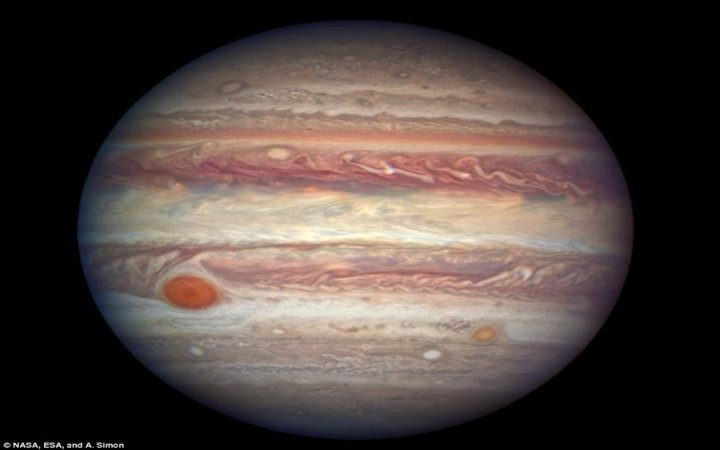Today’s Wonder of the Day was inspired by Heidi from Knoxville . Heidi Wonders, “Why is there a red spot on Jupiter?” Thanks for WONDERing with us, Heidi!
How many of the planets in our solar system can you identify by sight? A few of them are probably fairly easy.
For example, most everyone knows what Earth looks like. Some believe it resembles a blue marble because of the amount of Earth's surface covered by water.
Many people can also identify Mars because of its signature red color. Likewise, Saturn's unique rings make it easy to remember. Those who know what Jupiter looks like often recognize it when they see its Great Red Spot.
Why does Jupiter have a Great Red Spot? Did it get sunburned? Did alien visitors spill something? Could it be an ocean filled with cranberry juice? None of those farfetched ideas come close to the truth, which is that Jupiter's Great Red Spot is a humongous storm.
Jupiter's Great Red Spot makes Earth's storms look puny by comparison. The largest, most powerful storms ever recorded on Earth have been massive hurricanes that stretch across 1,000 miles with winds reaching 200 miles per hour.
The Great Red Spot stretches about 1.3 times the size of Earth with winds that can reach maximum speeds of up to 400 miles per hour! The storm has been raging on Jupiter for at least 150 years and possibly as long as 400 years or more. In comparison, Earth's longest storm, Hurricane John in 1994, lasted 31 days.
How can such a large storm rage on and on for so long? The Great Red Spot's longevity is a factor of Jupiter itself. Jupiter is about 1,000 times larger than Earth, but it consists mostly of gas. That means there's no solid ground like we have on Earth to weaken a storm.
The Great Red Spot has also lasted much longer than other storms on Jupiter because it's located between two powerful jet streams that move in opposite directions. Scientists claim the storm is like a spinning wheel caught between conveyor belts moving in opposite directions.
Despite its longevity, the Great Red Spot has been shrinking steadily. In the late 1800s, the Great Red Spot was about four times the size of Earth. By 1979, when the Voyager 2 spacecraft flew past Jupiter, the storm had shrunk to about twice the size of Earth.
Today, the Great Red Spot is about 1.3 times the size of Earth. Some scientists believe that it will continue to shrink and could disappear within the lifetimes of today's youth.
With help from new photographs and data from NASA's Juno spacecraft, scientists continue to study Jupiter and its Great Red Spot today. Some scientists are still trying to figure out why the storm is red. The most popular current theory is that cosmic rays or ultraviolet radiation from the Sun are reacting with ammonium hydrosulfide in Jupiter's atmosphere.




